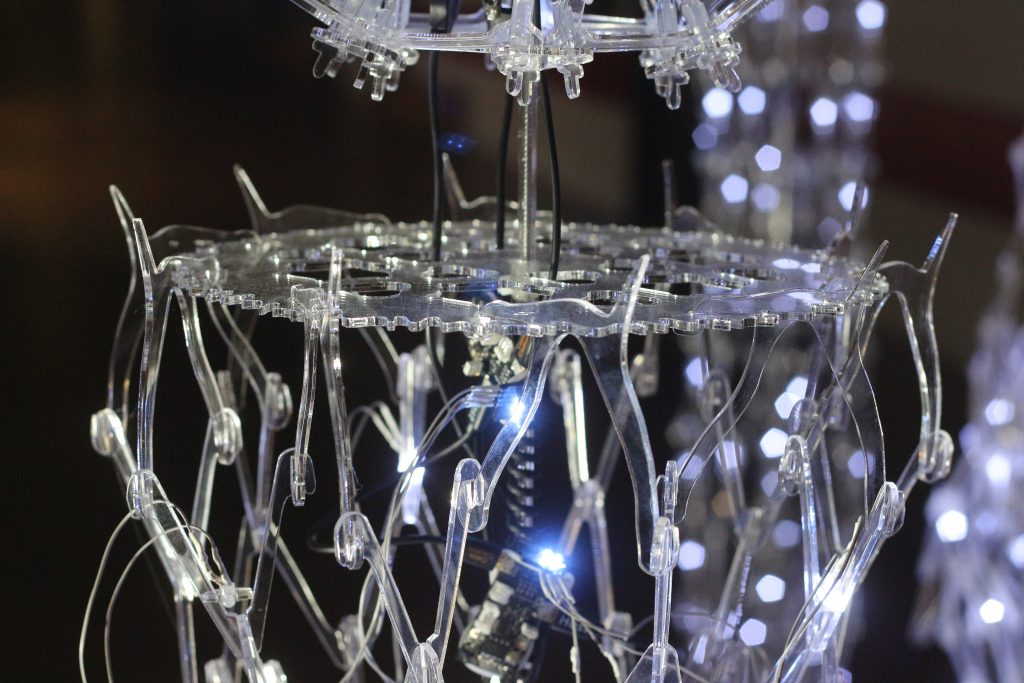
The Light Embodied Odyssey (LEO) is an interactive light sculpture made of landfill diverted laser cut acrylic, 3D printed PLA, and customized circuit boards that represent different scales of the natural world. Students’ expressions of human emotion are triggered in the light behavior when the motion sensors detect the presence of humans. Each “star” of the LEO constellation is a separate contribution by a different group of students over many years.
Principles of science are embedded in the work as a whole, in each star as well as in each building block. What portions of science, from the very small to the very larger, do these forms bring to mind?
What emotions are represented in the light patterns?
EB: “I love tinkering and iterating to get it just right”. Me: “you might be an engineer”. -attending engineering school.
LL:”I didn’t know what I liked or what I wanted to do with my future. The LEO project exposed me to so many different disciplines that I learned I like to design and build things with my hands.” -attending engineering school.
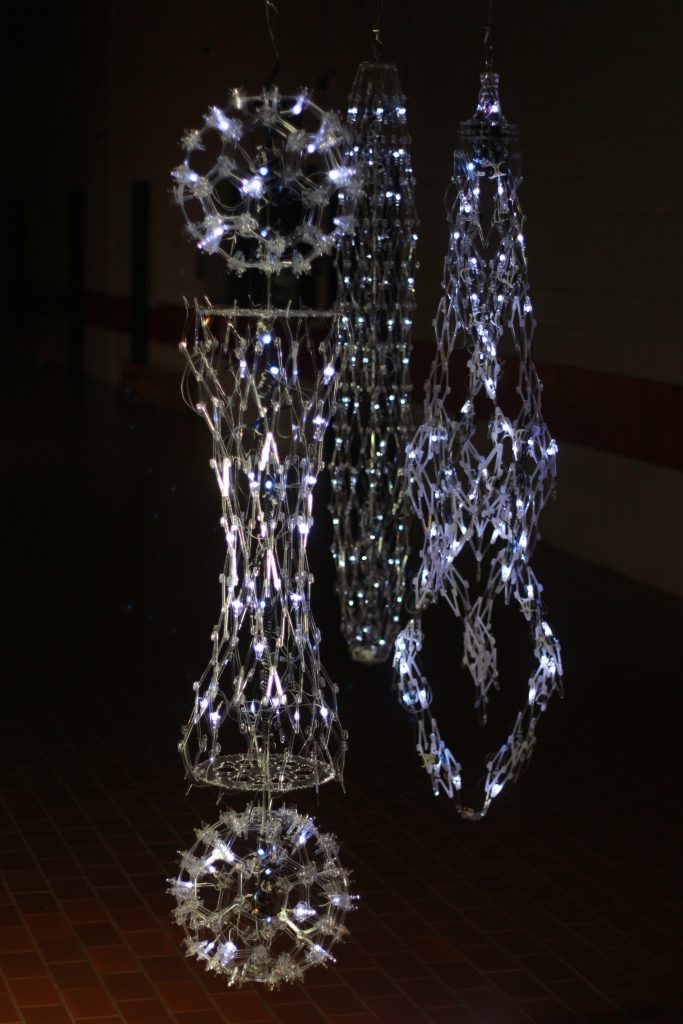

Teaching Strategies
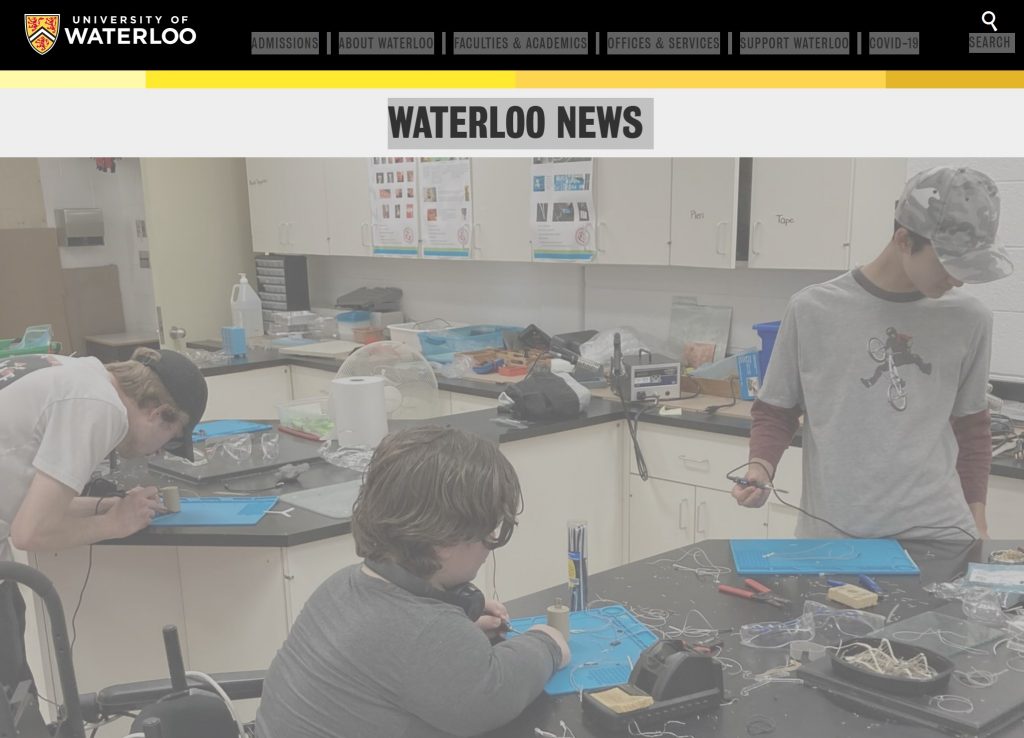
https://uwaterloo.ca/news/environment/integrative-teaching-high-school
Integrative teaching in high school
Project LEO turns Riverview High School students into creators by combining arts and science.- By Jude OkonkwoFaculty of Environment
Humans throughout history have dreamed of reaching out and touching the stars. Thanks to a unique collaboration with the University of Waterloo, Students at Riverview Highschool in New Brunswick can do just that — with a little help from a ladder.
Project LEO, standing for Light Embodied Odyssey, and named after the constellation, is a suspended columnar interactive light sculpture that responds to movement.
Students at Riverview have been learning remotely from Rob Gorbet, associate professor in the Faculty of Environment at the University of Waterloo and his brother Matt, a partner in Gorbet Design, about science, electronics, coding, emotion, and form. They have applied it all by creating LEO, a hands-on project that incorporates all these elements of Science, Technology, Engineering, Arts, and Mathematics (STEAM).
Gorbet is working with Riverview’s award-winning science teacher Ian Fogarty to help his high school students use interdisciplinary knowledge to make connections across their courses by engaging in an interactive design project.
“Students mention the feeling of empowerment they get from making a thing and putting it out in the world,” says Gorbet. “After being involved, they have talked about seeing themselves and their interests in more connected, higher-dimensional ways.”
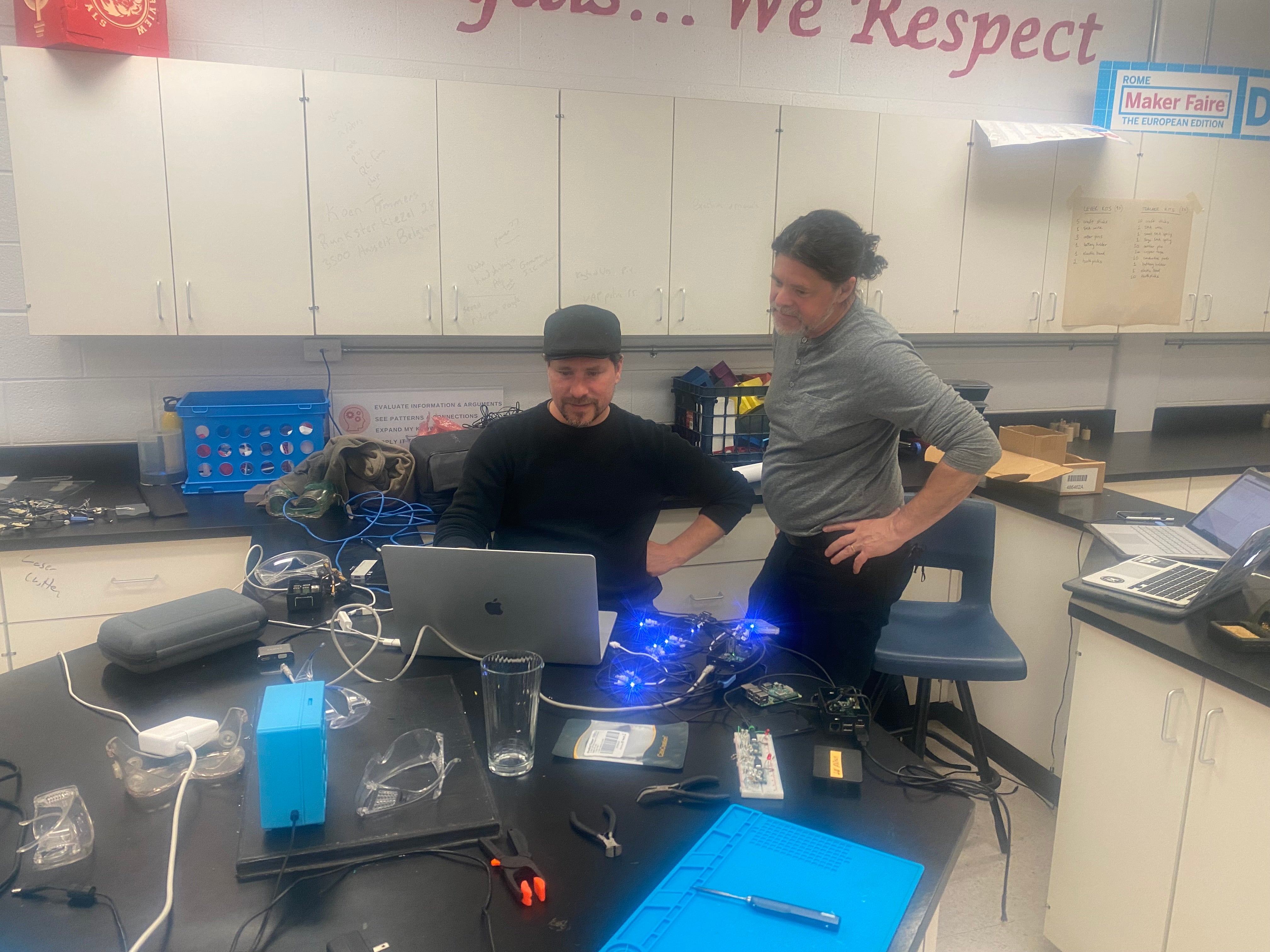
Right to Left: Prof. Rob Gorbet and his brother Matt, a partner in Gorbet Design
Gorbet’s goal as a Knowledge Integration (KI) professor is to challenge both students and the school system to rethink the labels they put on themselves. LEO is one example of how integrative projects might change how schools teach by helping advance cognitive development and critical thinking skills by encouraging synthesis of ideas. The project, displayed in Riverview’s main entrance, serves as a catalyst for conversation and brings different social groups together to encourage discussions about art, science, and education.
The project started in 2020-21, with the first cohort using the form language and electronics from Waterloo’s Living Architecture Systems Group to construct the first column which they called alpha leonis, they focused their creative energies primarily on designing the light behaviours to represent different human emotions.
In the 2021-22 school year two more columns were designed by students, eta and gamma. This time their artistic creativity focused on the structural forms and shapes were inspired by their understanding of science concepts.
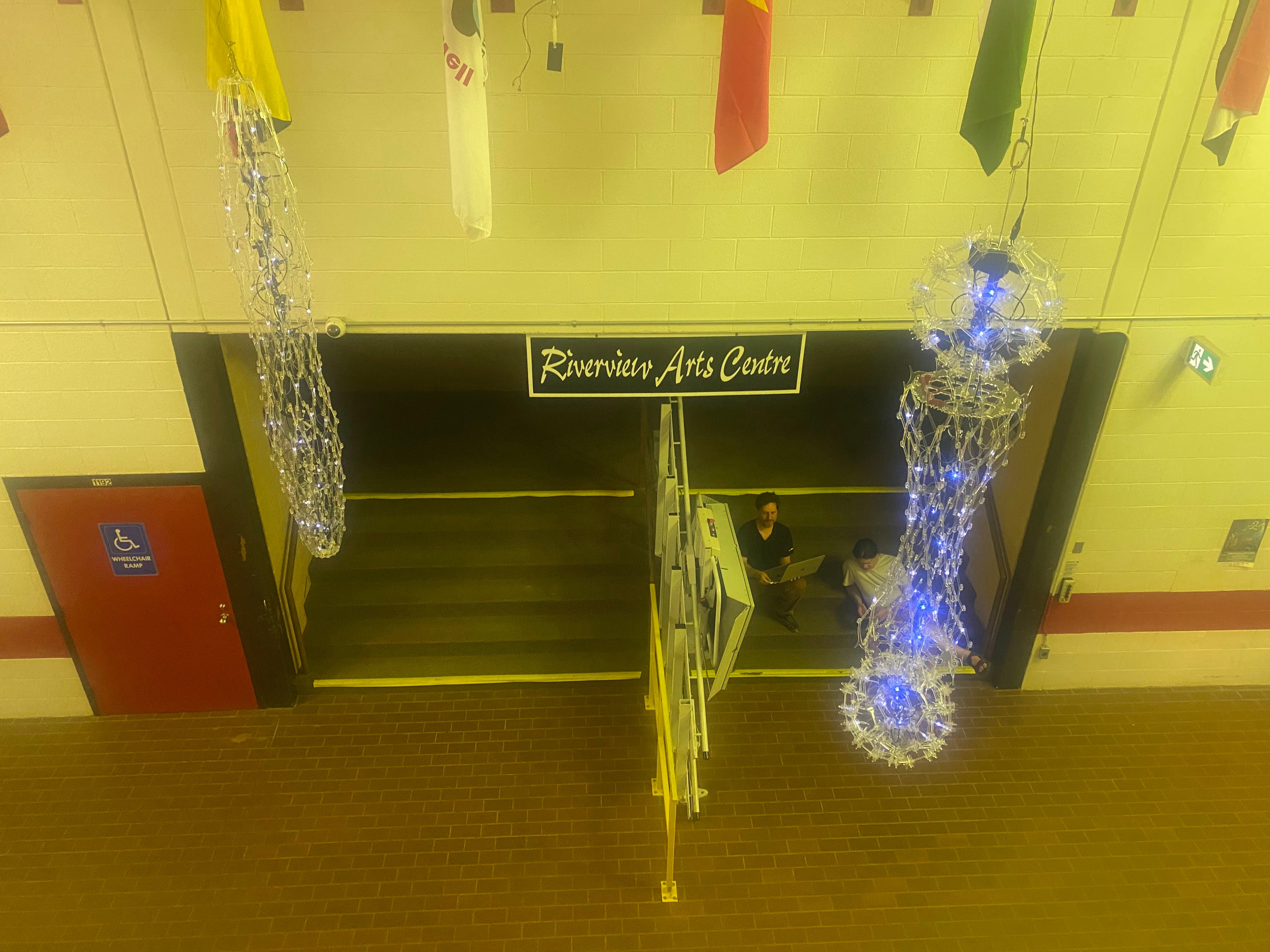
Project LEO installation at Riverview High School in New Brunswick
With more columns still to build, the project will continue for another few years. The students’ imaginations are boundless: might future iterations be able to read and respond to human emotions by using a camera and Artificial Intelligence (AI)? How might the sculpture reflect the environment, for example the tides in the nearby Bay of Fundy? As they are completed, each column of the project is raised in specific relation to the others to represent the constellation LEO, a tribute to the school’s lion mascot, and to the students’ ideas and efforts coming together to spawn a whole new creation.
Hopefully, this project will open the door for incoming and outgoing students to come up with more involved innovative ideas that will change the way they think of themselves and the world around them.
Learn more about project LEO: https://livingarchitecturesystems.com/project/riverview-column/
Learn more about the LASG: https://livingarchitecturesystems.com/about
More about Knowledge Integration: https://uwaterloo.ca/future-students/programs/knowledge-integration
LASG: https://livingarchitecturesystems.com/project/riverview-column/
Publications:
Brilliant Labs News Letter , pg 30-33
Timeline
2017- Ian and Rob meet in Waterloo and discuss teaching that merges science, engineering and art.
2018- Riverview Art Center asks for a signal light that would indicate the end of intermission. ArtSmart Grant received, but declined.
2019-2021-Rob’s residency at Riverview High School is derailed because of the Pandemic.
2020-2021-
alpha Leonis: The idea of returning to school from at home pandemic learning is very emotional- “Mazlow before Bloom”. Students practice using the lase cutter and soldering circuit boards as they largely recreate a form already created by the LASG. Their artistic energy is focused on the light patterns that represent human emotion. They learn that a “waist” can be created if a mistake is purposefully repeated. Following completion, students report that is reminiscent of a unicellular organism like a paramecium.
2021-2022-
eta-Leonis: The inspiration of a single student to use the chevron pieces from the LASG in a novel way. The monomer chevrons can form a shape reminiscent of chemical crystal or diatoms which are linked together to represent string theory or energy. It is important to note that the link to the physical world were assigned following their creation.
gamma-Leonis: was a larger group effort that modified the chevron structure from alpha from a positive curvature to a negative curvature and incorporated the Acoustic Nest from the LASG, which was a truncated icosahedron (soccer ball). Students report seeing two atoms held together by electrostatic attraction, while others see stars or galaxies held together by a gravitational field.
Rob and Matt visit to determine why alpha is not triggering correctly (the RPi cannot supply sufficient power to run the sensor and two chains of SAIs) and create the RPi network to allow stars to interact with each other.
2022-2023-
This year’s artistic focus would be to take larger steps to developing our artistic abilities as a group and to move away from “paint-by-number” of alpha, having 1 student have a creative experience in eta, or a small group experience in gamma.
The semester started with paper, playdoh and craft supplies to brainstorm as individuals and gradually increasing the group size until three predominant ideas surfaced. Two of the ideas survived.
mu-Leonis: a group effort from first semester that turned into an independent study by a math student destined for fine arts while I was on secondement to Brilliant Labs. This takes flat 2D hexagons with anti-nodal line patterns from wave interference which are pulled into the 3rd dimension to create spars. The spars are placed in the truncated icosahedron. Students start to play with spheres inside of spheres reminiscent or cellular and nuclear membranes. Students report seeing a virus because of the spars on the outer surface.
epsilon-Leonis: is the similarity in form of a human brain with a dangling spinal chord and a neural ring and dangling tentacles of a jelly fish. One students connects with a neuroscientist-artist in California (name?) to inform light placements and blink patterns that represent the various stages of sleep. Electroluminescent Wire (EL Wire) are introduced to represent neural pathways, while the failthful LEDs represent the nerial activity. Shape Memory Alloys (SMA/muscle wire) are introduced to bring motion. The spine/tentacle will retract based on volume.
Elevate Studios help students with photography, video, story telling and podcasting to create the intro video.
LEO makes an appearance at the regional Brilliant Labs Innovation Faire, the Canada Wide Science Fair in Edmonton and the National Science Teachers Association national conference in Atlanta giving students a chance to practice graphic arts and public speaking.
EB- “I love tinkering and iterating to get it just right”. Me: “you might be an engineer”. -attending engineering school.
LL-“I didn’t know what I liked or what I wanted to do with my future. The LEO project exposed me to so many different disciplines that I learned I like to design and build things with my hands.” -attending engineering school.
I was seconded to Brilliant Labs during the second semester and neither projects were completed within the year, although they were ambitious endeavors.
2023-2024-
mu is picked up by two students. The math to connect the inner sphere spars with the outer sphere spars was incorrect. The inner sphere is too large. There is not enough acrylic supplies to redesign. It is completely deconstructed, a threaded center post and an additional spar at the top is introduced to relieve the stress at the top. THe two grade 12 students gave up after a semester.
Two grade 9 students who were waiting for rides home from their older brother who was building Zeta, adopted mu. What took grade 12 students almost 2 years, took the webb twins just a few months!
eplison– grade 10 student makes significant progress with the microphone and SMA spine. Other students redesign the chevron to hang one shell inside the other. This stalled. Over the summer it fell.
A meeting with Philip and Rob at LASG helps us consider 2D geometry and how 3D shapes are created. It begins a discussion about a possible canopy, which would be an extension of the original project.
zeta: As the forms of the individual stars begin to organically tell a story from the very small scale of string theory (eta) to the very complex (epsilon) or the very large (gamma as galaxies), they discover a gap in the scales. Perhaps zeta should be a macromolecule like a protein or carbohydrate.
Two grads are looking to fill a free space in their schedules. One is looking to combine his newly discovered passion for art with his talents in math and science. The other is a 3D printing comp sci and music guru. Inspired by the skewer tetrahedrons from the Boisbuchet summer workshops, they built a globular protein shape that represents dopamine. They added spheres to represent a dopamine. At the bottom there is only a single dopamine that is required to get a “high” But there is a gradient to towards thet top where many dopamines are required fro a similar high and hence the addictions.
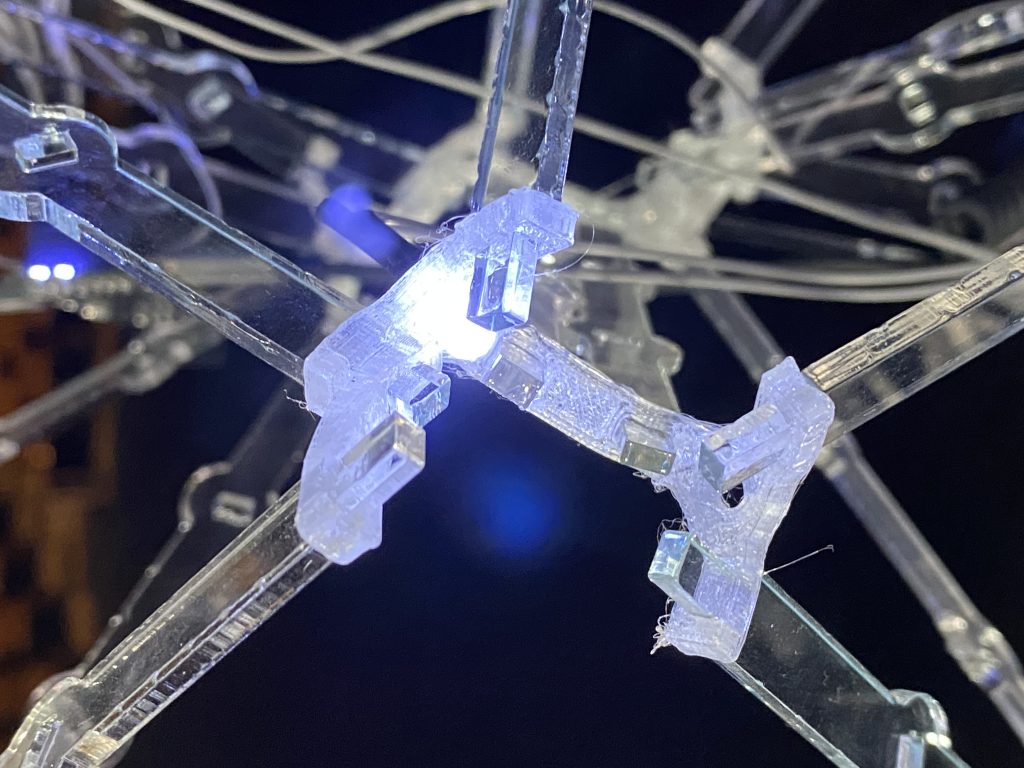
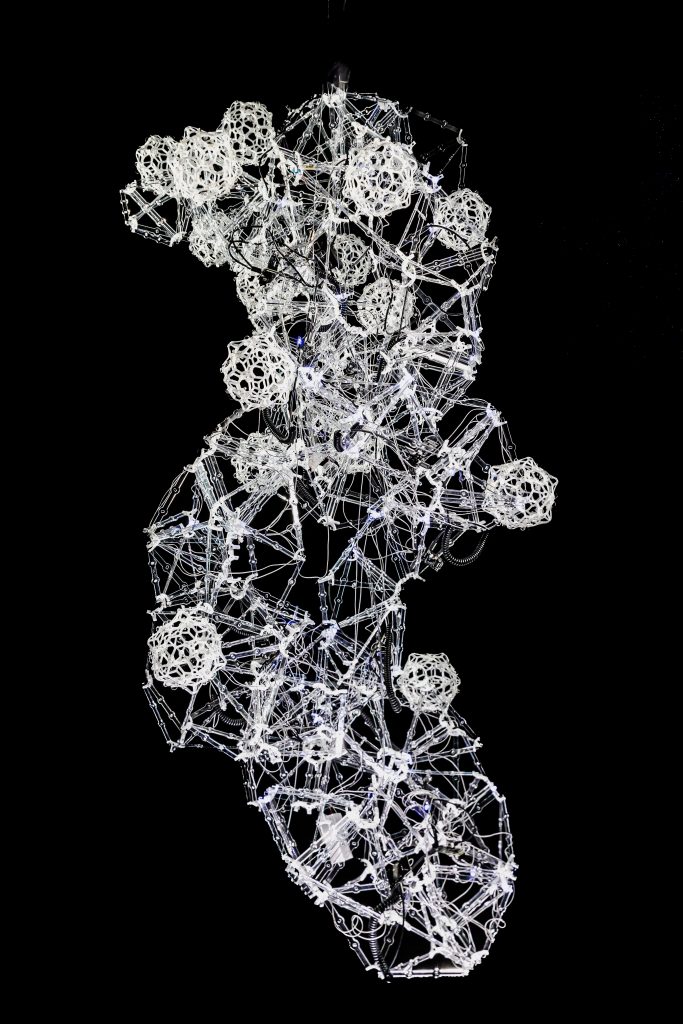
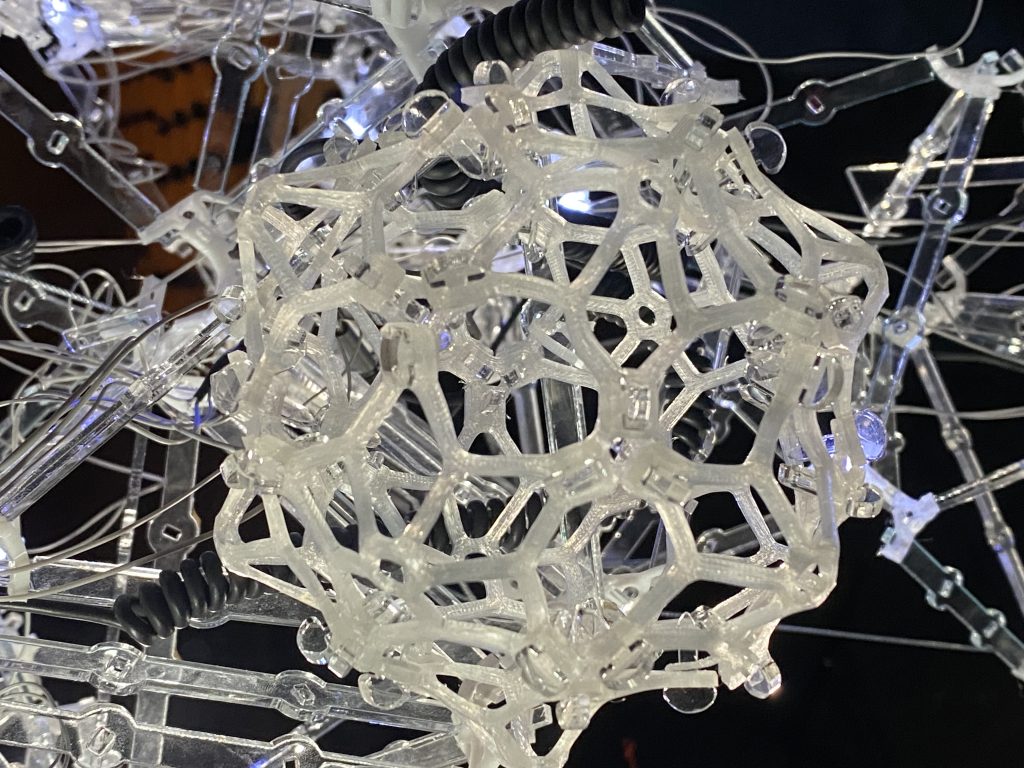
2024-2025
Both Mu and Zeta were raised. Epsilon had fallen during the summer. The Webb twins who had finished mu, wanted to adopt epsilon. They wanted to keep the brain idea, but wanted to start over from scratch. They did not want to invest in someone else’s creative process, they wanted their own. They are only in grade 10. I want LEO to be completed this year. We will see if they bit off more than they can chew.
Traces through Science
Sam wants to use the new LASG STEM Snap links and a newly discovered lED nOOds to make a 3D representation of the progress of different sciences through the renaissance to modern times.
Matter-AntiMatter
Allyson wants to use the Spyder hexagons to form a mat from which she can suspend Spars and 1 m lond side lit LEDs so that she can display matter and anti matte rin magnetic fields from CERN.
Anh is looking to adopt the Simmond’s Column and shift register to our work. Eventually, the 12 V LEDs get adopted by the new epsilon, despite the different triggering and electronic structures. Working with the sift registers are tough. Microbits and Pis seem to operate the LEDS of, but they cannot do to full take over. WE can control the LED strips with either a Microbit or a pi with python.but they are too slowed to do the shift register.
DEAF Columns, I figured out that we can use 5 Microbits to control the 8 motors and six 12 NEOpixel strips. Nick is going to try and access the many other pins so that we can reduce the number of Microbits involved. I complete one to prove it can be done, but with 5 microbits.

